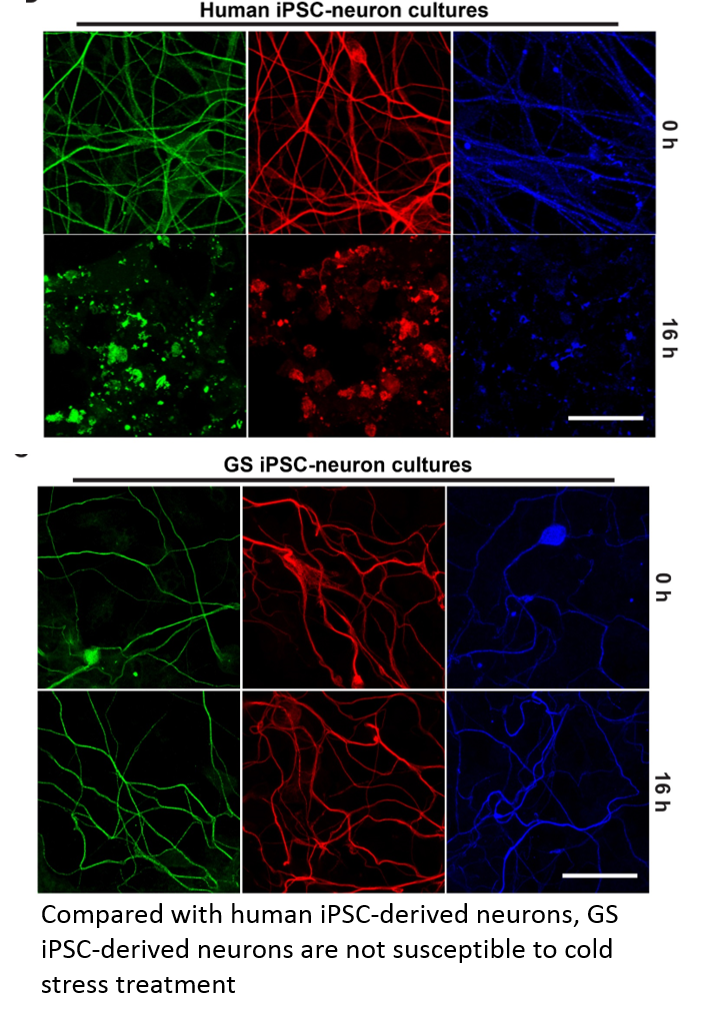Establishment of Induced Pluripotent Stem Cells (iPSC) from the Thirteen-lined Ground Squirrel
The limited choice in cell types available for in vitro studies has become an obstacle in hibernation research.
Researchers at the National Eye Institute for the first time have successfully established iPSC line(s) from a mammalian hibernator, which can be potentially used to generate various cell types and tissue models for in-depth mechanistic studies of hibernation and coldness tolerance in vitro.
Hibernation-specific features make this line a unique platform and valuable tool for inspiring novel pharmacological strategies. For example, they can be used to bestow cold adaptability to target cells and organs derived from non-hibernating mammals, as well as translating cold-adaptive strategies into humans in clinical applications, such as neural injury or other diseases that involve cold intolerance.

Competitive Advantages:
- The first iPSC line established from small hibernators like ground squirrel
- Potential in generating various cell types and tissue models for in-depth mechanistic studies of hibernation and coldness tolerance in vitro
- Unique benefits in studying hibernation mechanism and cold-adaptive strategies
Commercial Applications:
- Research tool for studying hibernation and cold adaptability and disease modeling
- Drug screening platform for neuronal injuries or other diseases
Collaborations
- Licensing